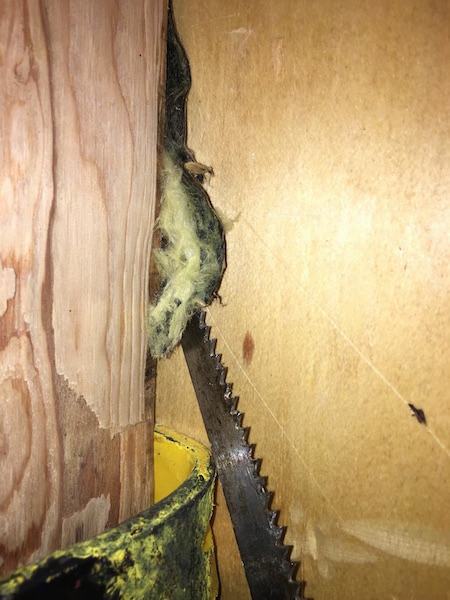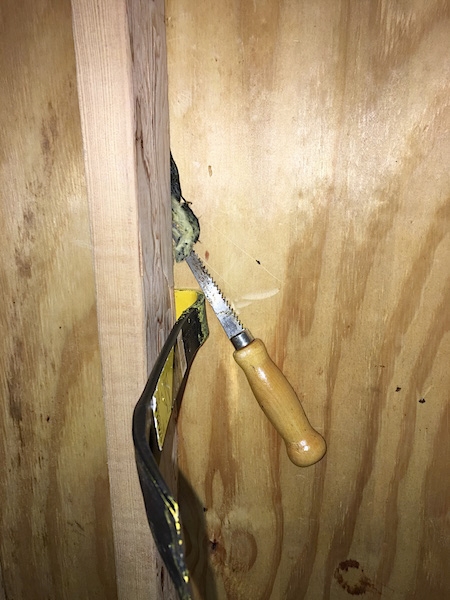
Even our barn has fiberglass insulation in it. Below the roof there is a fan that vents the fiberglass lined attic. When that fan was running the outdoor air would turn from good to poor as the fan sucked out formaldehyde fumes along with small particles and dispersed them into the air. Some days were worse than others depending on the humidity level and wind direction. On the hot, humid days with little breeze it would be the worst, as the particles would linger around the entire area. We are removing all of the fiberglass from the barn.

The inside of the barn became noticeably worse after there was a water leak along the back wall getting the batts wet, which caused them to break down and off gas at a faster rate.

The fiberglass batts to be removed from around the electrical boxes.

Two different brands of fiberglass on the wall of the barn, pink and yellow.

The yellow fiberglass batts behind the walls of the barn.

The pink fiberglass batts

Fiberglass removal along the backside of the barn.

Yellow batts of fiberglass coming out of the walls.

Pink batts of fiberglass coming out of the walls from the second story room.


The workers had thought they got it all out, but when I walked into the room I could smell and feel it coming from the wall. Sure enough, there was more fiberglass behind some of the beams.

The studded walls, although they will be covered with either dry wall or wood paneling, will have to be caulked and painted on the inside to seal in what little bits are left. The tiniest of particles cannot be seen and are very hard to get out from between the cracks in the wood.


The barn had roof shingles that had glass fibers in them. They too were causing health problems. We had them removed and replaced with red tin.

The barn after the fiberglass removal was complete.
Sharon Maguire - Updated 12-27-2016


